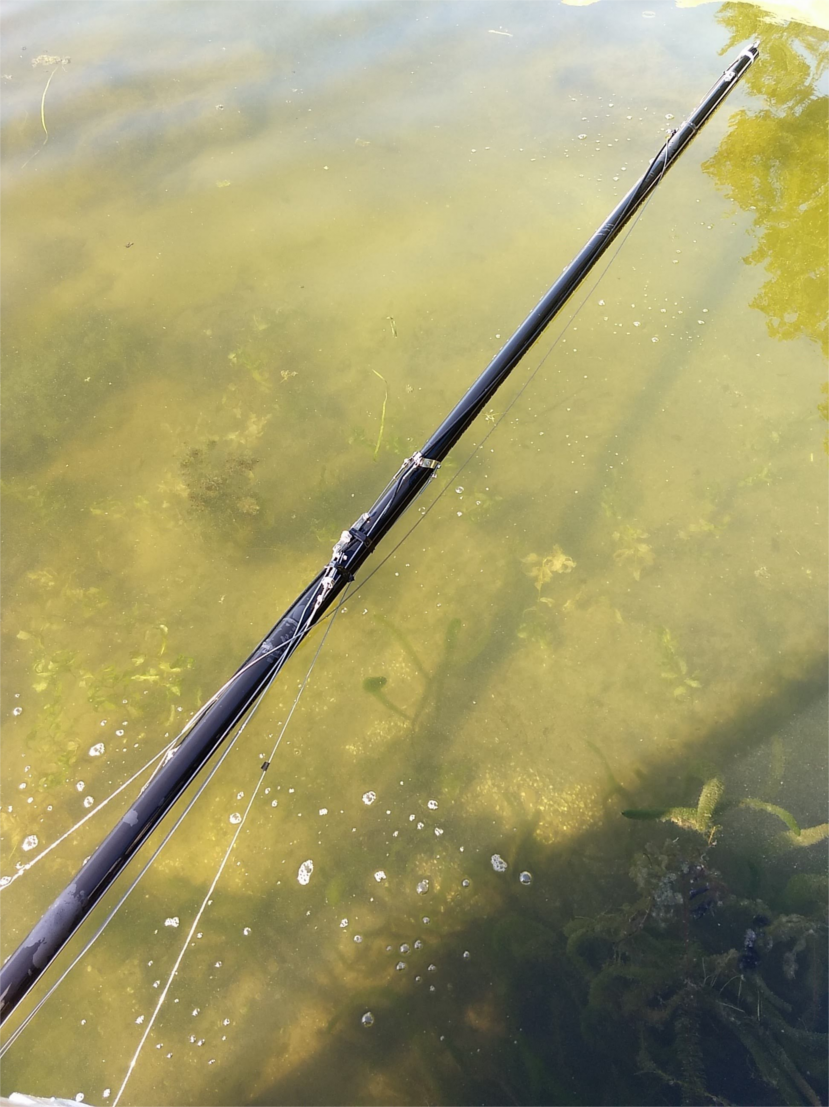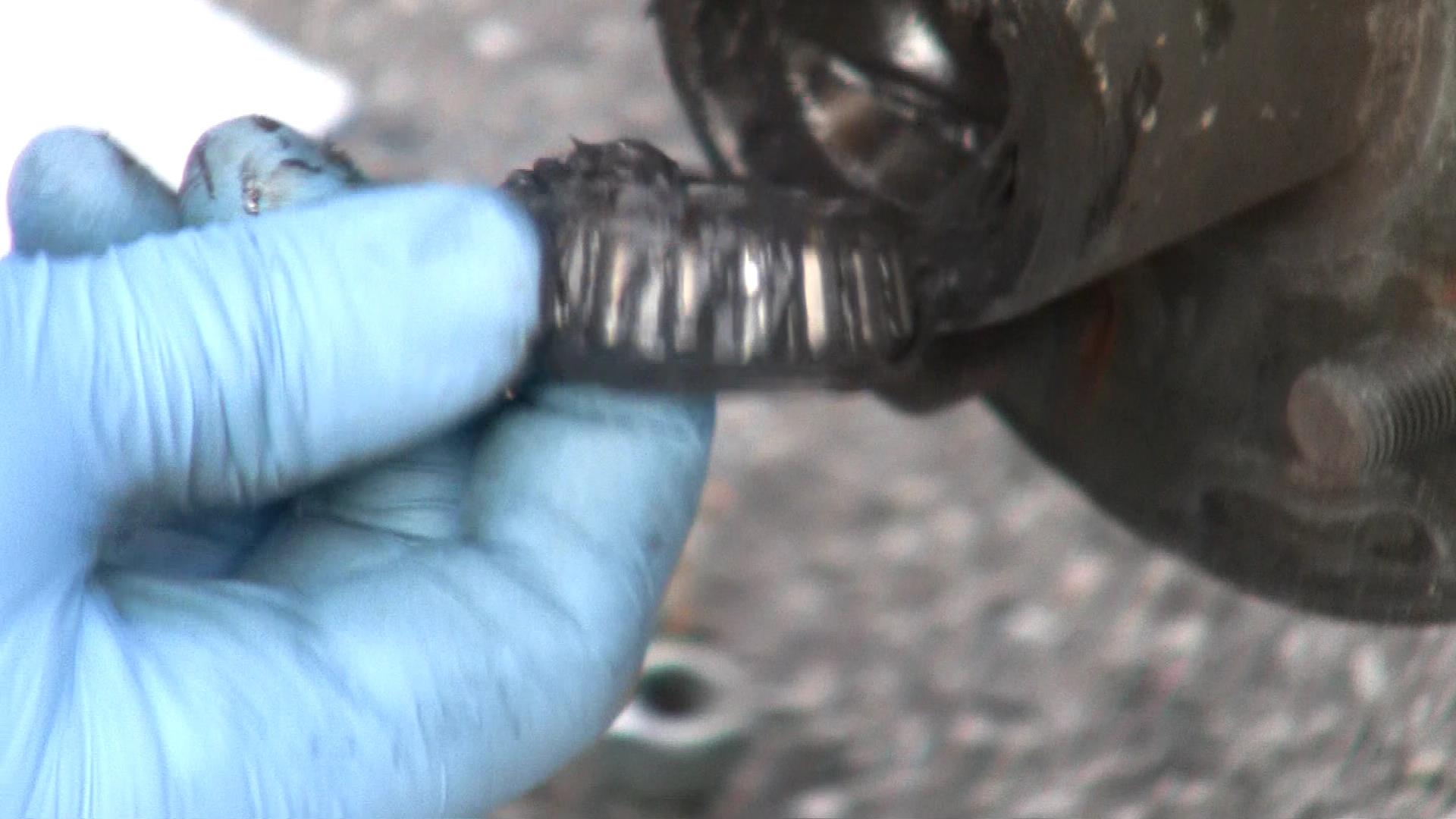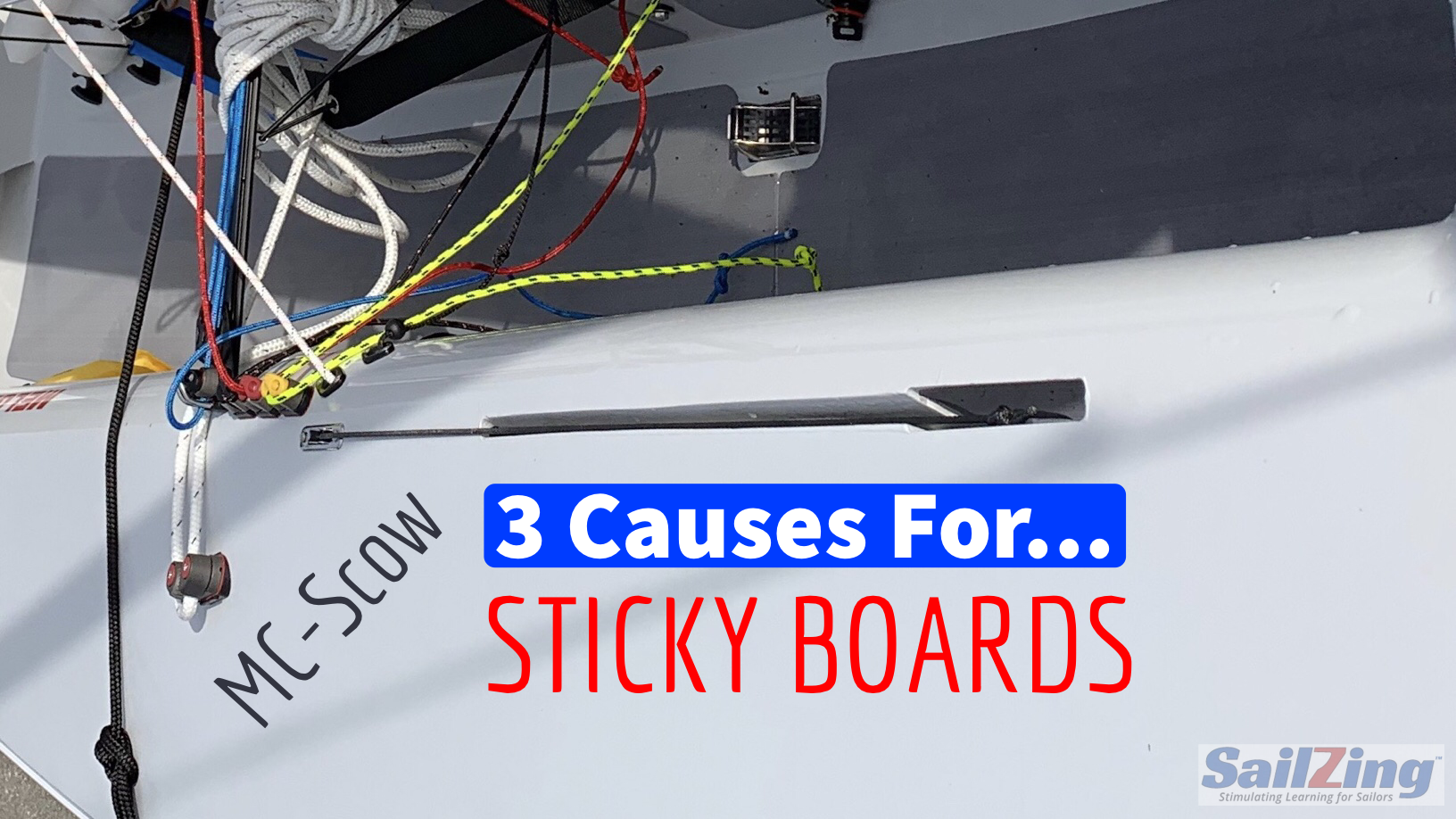For 1996 and later MCs, all masts must float for 10 minutes.
MC Scow Scantlings
Many one-design classes require some provisions for mast flotation to help prevent turtling. These include sealing the mast or providing positive flotation with foam or floats.
The MC class requires the mast to be sealed in order to float for 10 minutes. A sealed mast provides about 20 pounds (net) buoyancy. I recently discovered, the hard way, that my mast was not sealed. If you have replaced fittings on your mast, you may have degraded the seal.
Sealing your mast
If your mast isn’t sealed, you can repair it with silicone. Here are three tips for a complete job:
- Pay particular attention to the mast head fitting. This contacts the water first when you capsize and it has a lot of potential surface area for leaks. It might pay to drill out the rivets, remove the fitting, and seal the joint completely.
- Seal all of the fittings, even if you don’t suspect they leak. You don’t need to pull out the fitting. Just work silicone into the edges around the fitting and into any holes or other gaps.
- A rivet is not self-sealing. Cover the existing rivet heads. If you replace rivets, also coat the body with silicone.
Here’s a video showing how to seal your mast.
Positive Flotation
Some classes require positive mast flotation.
- E Scows incorporate flotation panels into their sailing instructions to be used at the discretion of the race committee.
- Some MC local fleets require flotation panels for all club races.
- Thistles with aluminum masts require positive flotation.
- Lightnings have foam in the mast above the spreaders.
- Note for other classes: Don’t try to add foam to your mast if it is sealed. Since you’re not increasing the amount of water displaced, this will only add weight without increasing buoyancy. Foam will also affect the stiffness of the mast.
If your class doesn’t require positive flotation, you may still want to try it for practice or confidence-building. Mast Head Floats – A cheap aid to training, from the Musto Performance Skiff website makes some good points about gaining experience in difficult conditions with a float.
Sources of flotation devices
- North Sails – Zenda, sells MC flotation panels
- Flying Scot Association flotation panel. This looks very similar to the MC panels I have seen.
- APS Mast Float for Top of Mainsail. This doesn’t look suitable for scows, but may be OK for small dinghies.
- Any sailmaker should be able to make a you a flotation panel.
Related Content:
Sailors Helping Sailors
Will you share your knowledge with your related Comments below?





